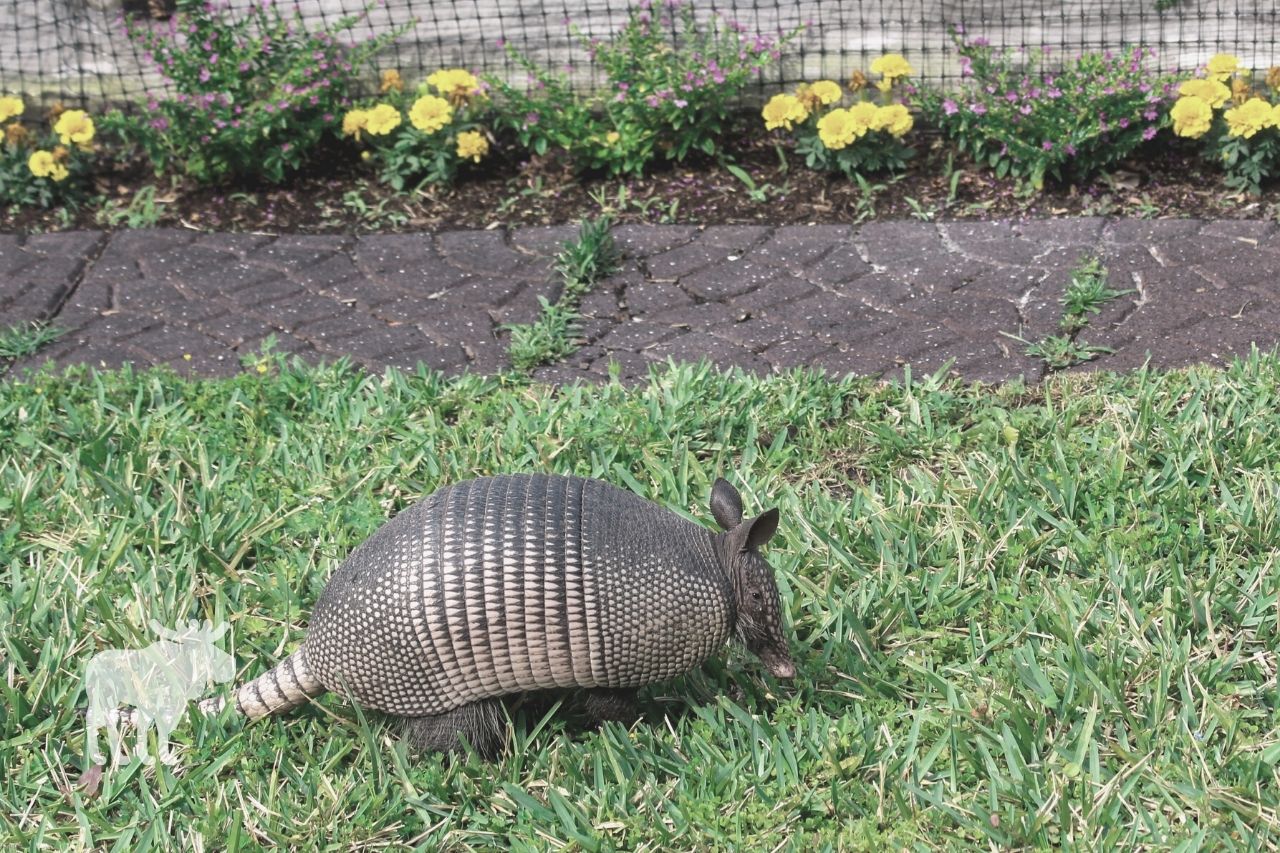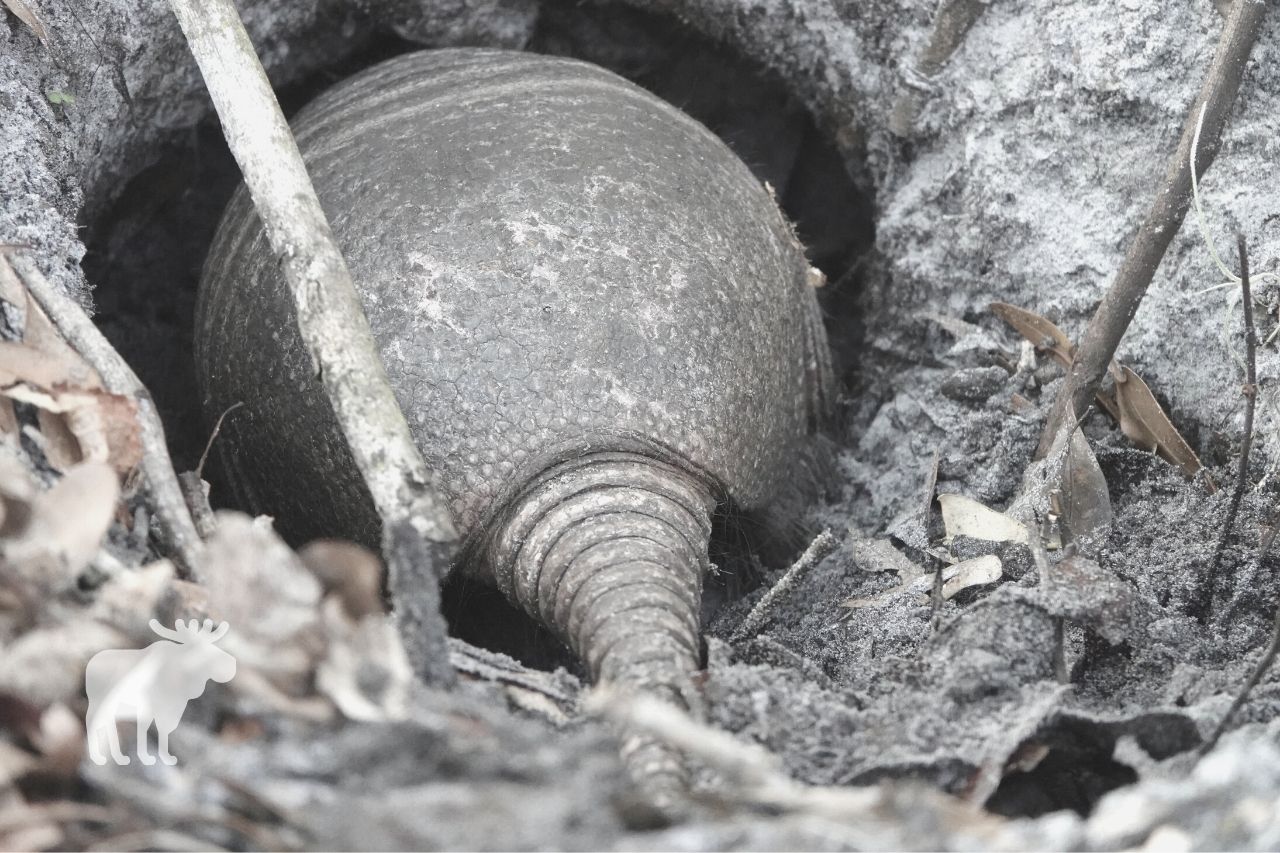Armadillos are cute little creatures that we all love, but they can cause unsightly landscaping damage. So, how do you get rid of an armadillo in your yard? Keep reading to find out more!
What You'll Learn Today
Are Armadillos Good to Have Around?

Armadillos are generally harmless little creatures. The main reason people want to get rid of them is the problems they can cause in lawns and gardens.
Armadillos search for food by digging; they mostly eat earthworms, grubs, and other in-ground insects.
Because they’re always digging for their next meal, they frequently cause scratch holes throughout your lawn. These holes are usually small, but they are often paired with areas of torn up grass.
As armadillos dig more and more areas of your yard, the grass will begin to die, giving your yard a patchy, torn up look.
Armadillos may also dig up flowers and other small plants. They often target gardens and flower beds because the ground is already soft and easy to dig, as well as full of worms and other bugs.
If an armadillo likes what your yard has to offer, it may decide to move in. Armadillo burrows may begin showing up in your yard; they are easily recognizable by the large entrance and exit holes.
Again, armadillos generally don’t cause too many issues; but if you care about the appearance of your yard or have gardens and flower beds growing, you may want to take steps to get rid of armadillos and keep them out of your yard.
Can an Armadillo Hurt You?
Armadillos have spikes on their body armor as well as sharp claws. While they don’t make a point of attacking or attempting to injure anyone, they may scratch and thrash around if you try to handle them.
It’s best to allow professional wildlife removal specialists to do the job if your armadillos need to be removed by hand. They have the proper training and protective gear for handling armadillos without injuring the creatures or becoming injured themselves.
Another possible concern related to armadillos is the fact that many of them harbor the leprosy bacteria.
This interview from the Centers for Disease Control and Prevention goes into detail about this potential risk, but the takeaway is that the threat of catching leprosy from an armadillo is small, and even if you do catch it, the disease is easily treatable and curable.
Most humans have a natural immunity to leprosy, and the bacteria is not easily transmitted between armadillos and humans. To be able to get leprosy from an infected armadillo, you would have to either eat the armadillo without thoroughly cooking it or be in contact with the animal’s blood or body tissues for an extended period of time.
Of course, if you’re going to be handling armadillos, you may want to take precautions and wear gloves. Change your clothes and wash the gloves when you are done.
Also, if you have a lot of armadillos digging in your garden, there’s a nominal chance that some of the leprosy bacteria may be in your garden soil. In this case, it might be a good idea to wear gloves while you’re working in your garden.
How Do You Get Rid of Armadillos?
Armadillos are not the easiest wildlife to get rid of, but they’re not the hardest to get rid of either. As long as you know what you’re doing, there are several methods of getting rid of armadillos that are highly effective.
Before getting started, check out this video to see what armadillo damage looks like as well as some tips on getting rid of them.
Let’s take a closer look at some of the methods for getting rid of armadillos.
Trap Them
There are several different ways you can attempt to trap an armadillo. This task is easiest if you know where the armadillo’s burrow is and can catch the armadillo leaving its burrow to search for food.
You can try using a medium-sized live animal trap, the same size as you would use for trapping squirrels and opossums. Live animal traps work best if you can place them along an existing path that the armadillo uses regularly.
You could also try sticking a piece of wide-diameter PVC pipe in the burrow hole. When the armadillo attempts to leave, it will get wedged in the pipe.
Whatever method you use for trapping the armadillo, you’ll want to check the trap regularly, especially in the late evening. As soon as you see that you’ve caught your armadillo, it’s time to relocate it.
Chase Them Out
Chasing an armadillo out of its burrow will make it easier to trap and, even if you’re not planning on trapping it, may convince it to find a new home. There are different ways to chase the armadillos out.
One of the best ways is to use a garden hose and run some water down the burrow–not enough to drown the armadillo, but to make it uncomfortable.
You could also use various scent repellents to chase the armadillo out. We’ll talk more about scent repellents in a moment.
Put Up Barriers
Armadillos aren’t the most industrious animals. If they run into a barrier, they won’t try to go through it or under it; they will simply keep moving along until they get past the barrier.
If armadillos are getting into your garden, try building a fence around it. You could also cover certain areas with chicken wire to discourage digging. If the armadillos can’t get to their favorite spots to dig for food, they may go away on their own.
How to Stop Armadillo Digging?

If you don’t mind having the armadillos around but don’t want them rooting up your lawn and flower beds, you may be wondering if there’s anything you can do to keep them from digging where you don’t want them to.
The best way to keep armadillos from digging is to put down a physical barrier. You can try putting boards down along the bottom of a fence to keep armadillos from digging under, or put down chicken wire in known problem areas.
The chicken wire, in particular, will make it hard to dig without killing the plants and grass underneath. As noted earlier, armadillos don’t want to work too hard for their food; if they can’t easily dig the dirt up, they will simply move on.
Of course, they may just move to another area of your yard. If you want to keep them out of your yard altogether, your best bet may be using a scent repellent.
Speaking of which…
What Smells Do Armadillos Hate?
The most effective scent repellent for armadillos is castor oil. Armadillos, like other forms of wildlife, hate the smell of it and will move on to another area if you use it.
An added benefit of using castor oil is that it spoils the armadillo’s food source; so not only does the smell deter them, but the lack of food will force them to move on.
Another effective repellent is to use some sort of predator urine. Urine repellents make armadillos think a predator has moved into the territory, which in turn will drive the armadillos away.
You can also try using cayenne pepper, and generic pest repellents, but these may not be quite as effective. Garlic is another effective deterrent, but it will have to be replaced frequently.
How Do You Keep Armadillos Out of Your Yard?
There is no one “quick fix” for getting rid of armadillos and keeping them away. You may have to try a combination of things over time.
You can use scent repellents and fencing, as discussed above, to try and keep them out in the first place. If you find an armadillo in your yard, take action immediately by attempting to trap and relocate it.
It also might help to keep the number of ground-dwelling insects in your yard low, if possible. Of course, this isn’t always practical, especially in gardens where a lot of earthworms are present and beneficial to the soil quality.
Protect lawns and gardens with fencing or chicken wire if you know there are a lot of armadillos in your area. Taking these preventative measures will make your yard less desirable and may help prevent a family of armadillos from moving in.
Conclusion
There are several different ways you can get rid of armadillos. You can try trapping and relocating them, chasing them out of their burrows, using scent repellents to keep them away, and putting down barriers to keep them from digging, but please do NOT kill them!
One suggestion I rarely find, which is quite effective, is an electric “fence”. You don’t need anything fancy though. Small energizers sell for $30-$60. In addition, you’ll need to pound a grounding rod into the soil. You can buy a 4 foot long one for about $20. I clamp one side of the energizer directly to the rod, about a foot above ground. (That would be the green, ground side!) Wrap electrical tape around it if you want it extra secure. On the positive side, you can use any sort of bare wire. For posts, half-inch PVC pipe works nicely, cut into about 2 foot lengths. Drilling a hole for the wire is helpful, but some people just wrap the wire around the pipe. What you end up with is a wire about a foot above the ground, running around your garden. The energizer delivers an electric charge about once a second. It’s strong enough to produce good zap, but it’s safe. (Not lethal.) The only real hazard is remembering not to trip over the wire. A timer can be used to energize the wire only at night. I have mine connected to a Wi-Fi controlled outlet.